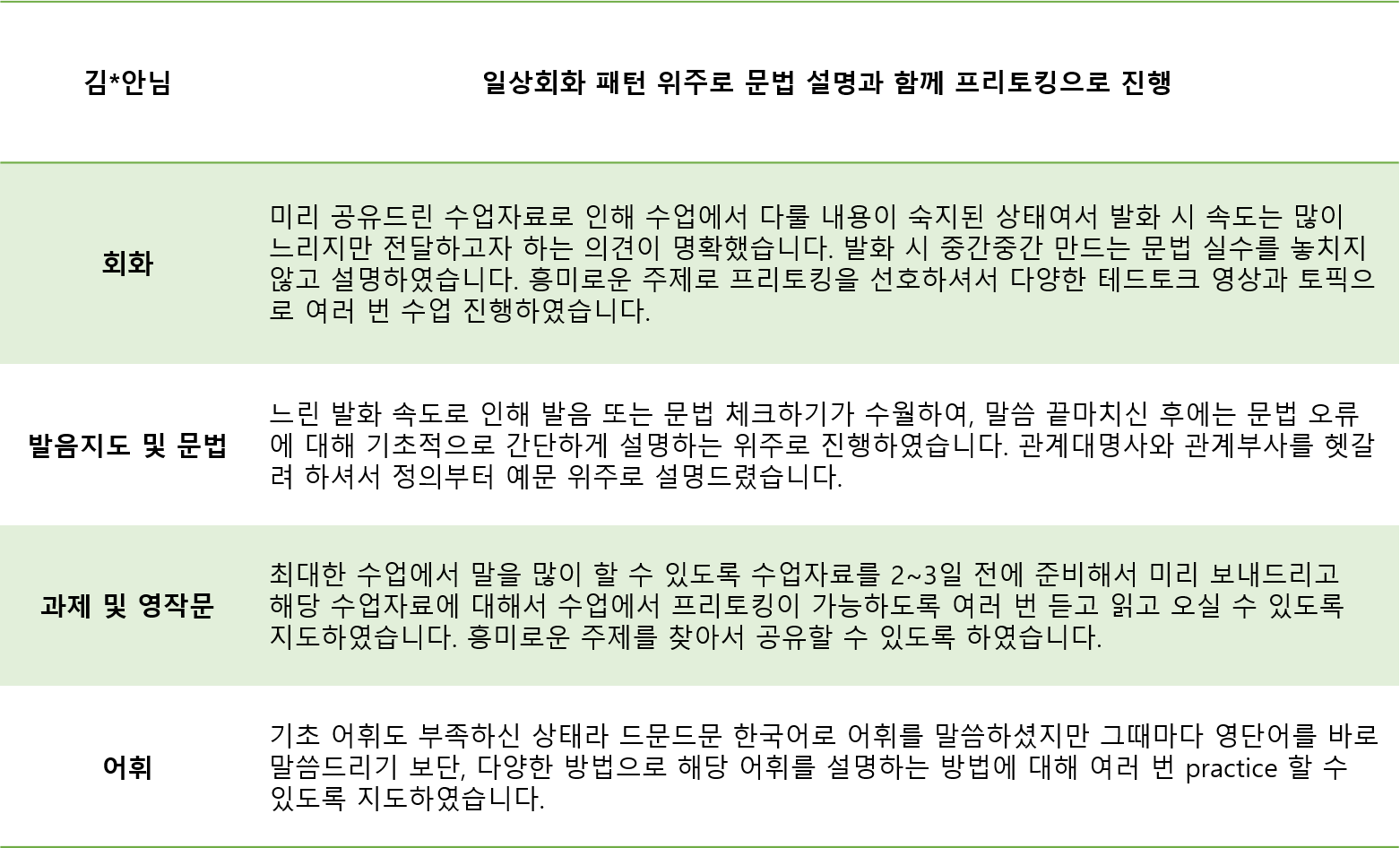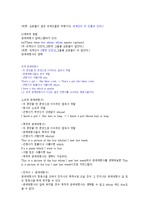관계부사 where 예문
어디, 언제, 어떻게 관계부사 사용하기
관계부사는 문장에서 한정된 단어와 전체 단어를 연결하는 파트입니다. 관계부사는 일반적으로 문장에서 설명하는 지명사나 명사 앞에 위치하며, 그 지명사 또는 명사가 나타내는 대상에 따라 어디, 언제, 어떻게 등의 정보를 전달합니다.
• 관계부사의 의미와 역할
관계부사의 주요 역할은 선행 명사나 지시 대상을 구체화하고, 그것을 전체 정보와 연결하여 전달하는 것입니다. 이것이 바로 관계부사의 기본적인 역할이며, 관계대명사와 함께 사용되어 문장의 의미를 완성시켜줍니다. 이러한 관계부사는 첫 번째 문장에 사용됩니다.
• 어떤 경우 어떤 관계부사를 사용해야 하는지
어떤 관계부사를 사용할지는 문장의 의도에 따라 달라집니다. 관계부사를 사용할 때는 문장에서 설명하고자 하는 대상과 관계 부사 사이의 관계를 고려하여 사용해야 합니다. 즉, 관계 부사가 그 문장에서 전달하고자 하는 정보에 대해 참조하는 방식을 고려해야 합니다.
• 관계부사의 종류와 예시
관계부사의 종류에는 where, when, why 등이 포함됩니다. 다음은 각각의 종류에 대한 예시입니다.
– where: This is the restaurant where I ate dinner yesterday.
– when: The day when he came to visit me was very hot.
– why: That’s the reason why he quit his job.
관계부사를 사용한 예문 분석
관계부사를 포함한 예문을 해석할 때는 관계부사가 포함된 명사나 대명사의 성격에 대해 파악해야 합니다. 그리고 관여하는 문장이 어떤 상황에서 사용되었는지에 대해 고민하여 전체적인 이해도를 높여야 합니다.
• 관계부사가 포함된 예문의 해석 방법
관계부사가 포함된 예문의 해석 방법은 일반적으로 다음과 같습니다.
1. 선행 명사를 찾습니다.
2. 선행 명사를 기준으로 관계 부사와 간접적 관계를 확인합니다.
3. 관계부사가 전달하는 정보를 기준으로 문장 전체의 의미를 파악합니다.
• 관계부사를 사용한 문장의 의미 파악 방법
관계부사를 사용한 문장의 의미를 파악하는 방법은 다음과 같습니다.
1. 문장을 통해 전달하려는 주요 정보를 파악합니다.
2. 선행 명사와 결합된 관계부사와 관계대명사의 성격을 분석합니다.
3. 전체 문장을 쉽게 이해하기 위해 문장 구조와 단어 선택, 문장 흐름을 파악합니다.
관계부사와 관계대명사의 차이
관계부사와 관계대명사는 비슷한 역할을 수행하지만, 사용 방법과 위치가 다릅니다.
• 관계대명사와 관계부사의 구분
관계대명사는 대체되는 명사나 대명사 자체로 문장에서 연결 역할을 하는 것입니다. 관계대명사가 기능하는 부분을 관계절이라고 합니다. 이에 반해, 관계부사는 그 자체로 문장에서 정보를 전달하는 부분입니다.
• 관계대명사와 관계부사의 사용 용례 대조 분석
다음은 관계대명사와 관계부사가 포함된 예시입니다.
1. House WHICH is in England → 영국에 있는 집
2. England, WHERE the house is → 집이 있는 영국
위의 두 예시에서 관계대명사는 첫 번째 문장에서 이전 대명사를 대체합니다. 이것은 새로운 집을 소개하기 위해 사용됩니다. 반면에 관계부사 where은 영국의 지정 장소를 나타내고, 선행 명사 ‘England’을 고려하여 전체적인 정보를 참조합니다.
관계부사 사용 시 주의할 점
관계부사를 사용할 때는 문법적인 문제와 함께 위치와 연결하는 문장 요소에 대한 주의가 필요합니다.
• 관계부사를 사용하는 경우 주의할 문법적 요소
관계 부사를 포함하여 문장을 만들 때, 동사의 변화를 고려해야 합니다. 즉, 주어와 동사의 형태를 일치시켜야 합니다.
• 관계부사의 위치와 문장 구성에서 주의해야 할 점
관계부사가 사용되는 문장에서 위치가 중요합니다. 관계대명사와 함께 사용될 경우, 선행 명사 다음에 올 수 있습니다. 그러므로 관계부사가 위치하고 싶은 문장의 대상에 따라 문장의 구성과 위치를 고려해야 합니다.
관계부사 학습 방법
관계부사를 학습하는 방법은 다음과 같습니다.
• 관계부사의 개념 이해와 학습 방법
관계부사는 다른 언어에는 없는 한국어 특유의 문법 요소입니다. 이를 이해하기 위해서는 문장에서 참조되고자 하는 정보를 파악해야 합니다. 관계 부사를 학습하는 것은 이러한 문장의 구조와 전체적인 의미 파악 능력을 향상시킬 수 있습니다.
• 관계부사 학습에 도움이 되는 유용한 자료 검토
관계부사 학습에는 다양한 미디어 자료와 학습 자료들이 도움이 됩니다. 예를 들어, 관련 문제와 함께 문장 해석 도구와 문법 규칙을 설명하는 교재를 검토할 수 있습니다.
관계부사의 활용 예시
• 관계부사를 사용한 문장 분석 및 해석 예시
1. The museum WHERE they saw the painting is in New York. → 그들이 그림을 본 박물관은 뉴욕에 있다.
2. The reason WHY I’m here is to talk about our new project. → 내가 여기 있는 이유는 새로운 프로젝트에 대해 이야기하려고 한다는 것이다.
• 관계부사를 사용하여 문장 구성할 때의 예시 모음
– 관계부사 where 대신 that을 사용
He is not the person where/that I saw yesterday. → 그는 어제 내가 본 사람이 아니다.
– 관계부사, 관계대명사, 관계부사 생략
The restaurant (that) we went to yesterday was really great. 어제 우리가 간 식당은 정말 멋졌다.
– 관계부사 종류
The car WHERE I left my phone was parked outside. → 내 휴대폰을 놓고 온 자동차는 밖에 주차되어 있었다.
– 관계부사 계속적용법
This is the hotel WHERE my sister and I stayed, and WHERE we met our friend. → 이 호텔은 내 동생과 나가 머물렀던 곳이며, 우리가 친구를 만났던 곳이다.
– 관계부사 완전한 문장
I have been to Paris twice, WHEN I was a university student and again last year. → 나는 대학생이었을 때와 작년에 두 번 파리에 갔다.
– 관계부사 선행사관계부사 where 예문
This is the garden in WHICH the queen used to walk. → 여왕이 산책하던 정원이다.
FAQs
Q1. 관계 부사와 관계 대명사의 차이는 무엇인가요?
A. 관계대명사는 대체되는 명사나 대명사 자체로 문장에서 연결 역할을 하는 것입니다. 이를 관계절이라고 합니다. 이에 반해, 관계부사는 그 자체로 문장에서 정보를 전달하는 부분입니다.
Q2. 관계부사를 사용할 때 주의해야 할 포인트는 무엇인가요?
A. 관계부사를 사용할 때는 문법적인 문제와 함께 위치와 연결하는 문장 요소에 대한 주의가 필요합니다. 즉, 주어와 동사의 형태를 일치시켜야 하고, 위치가 중요하므로 문장의 구성과 위치를 고려해야 합니다.
Q3. 관계부사를 학습하는 방법에는 어떤 것이 있나요?
A. 관계부사를 학습하는데는 교재와 문장 해석 도구, 문제 리스트 등이 도움이 됩니다. 문장 구조와 전체적인 의미 파악을 향상시키고, 문장에서 설명하는 대상에 대한 파악을 하면 좋습니다.
Q4. 관계부사를 사용하여 문장을 구성할 때의 예시는 어떤 것이 있나요?
A. 관계부사를 포함하고 문장을 구성하는 경우 마지막 단어를 연결하는데 사용됩니다. 예를 들어 “This is the restaurant WHERE I ate dinner yesterday”와 같은 문장에서 WHERE는 선행 명사 다음에 위치하고 더 구체적인 정보를 제공합니다.
사용자가 검색한 키워드: 관계부사 where 예문 관계부사 where 대신 that, where 관계부사 관계대명사, where 관계대명사, 관계부사 생략, 관계부사 종류, 관계부사 계속적용법, 관계부사 완전한 문장, 관계부사 선행사
Categories: Top 66 관계부사 where 예문
관계부사 when, where, how, why의 차이는? 이거 보면 절대 안 까먹음!
여기에서 자세히 보기: c3.castu.org
관계부사 where 대신 that
In Korean language, 관계부사 (gwan-ye-bu-sa) is an important grammatical aspect that is often used in everyday conversation and writing. This term refers to the use of words that connect two clauses or sentences, indicating a relationship between them. One of the most commonly used 관계부사 in Korean is the word 대신 (dae-sin), which can be translated into English as “instead,” “in place of,” or “on behalf of.”
This article will focus on the use of 대신 as a 관계부사 in the Korean language and provide useful information and examples for learners of Korean.
Overview of 대신 as a 관계부사
As a 관계부사, 대신 is mainly used to introduce relative clauses that indicate the reason or cause of an action or situation. In this case, it functions as a conjunction and connects two clauses or sentences. The first clause usually contains the action or situation, while the second clause explains the reason or cause behind it.
For example, consider the following sentence in Korean:
나는 차를 살 대신에 영화를 볼 수 있다.
(NA-neun cha-reul sal dae-sin-e yeong-hwa-reul bol su it-da.)
I can watch a movie instead of buying a car.
In this sentence, 대신 is used to introduce the relative clause that explains the reason behind the action of watching a movie rather than buying a car.
Other examples of using 대신 as a 관계부사 include:
– 저는 출장 대신에 워크숍에 참석할 거예요.
(Jeo-neun chul-jang dae-sin-e wokeu-soop-e cham-seok-hal geo-ye-yo.)
I will attend a workshop instead of going on a business trip.
– 그녀는 외국어를 배우는 대신에 예술을 전공했다.
(Geu-nyeo-neun oe-guk-eo-reul bae-u-neun dae-sin-e ye-sul-eul jeon-gong-haet-da.)
She majored in art instead of learning a foreign language.
– 우리 아들은 스포츠 팀에 가입하는 대신에 노래 학원에 다닙니다.
(U-ri a-deul-eun seu-po-cheu tim-e ga-ip-ha-neun dae-sin-e no-rae hak-won-e da-nip-ni-da.)
Instead of joining a sports team, our son goes to a singing academy.
As seen in these examples, 대신 is used to indicate a choice or decision made in place of another option. It can also be used to express the idea of “on behalf of” or “in place of” someone else.
Using 대신 in Different Sentence Types
대신 can be used in different sentence types, including statements, questions, commands, and requests. The following are examples of how 대신 can be used in different sentence types:
Statement
– 아침에 커피를 대신해서 차를 마셨어요.
(A-chim-e keo-pi-reul dae-sin-hae-seo cha-reul ma-syeot-sseo-yo.)
I drank tea in place of coffee this morning.
Question
– 이번 주말에 영화를 보는 대신에 운동할까요?
(I-beon ju-mal-e yeong-hwa-reul bo-neun dae-sin-e un-dong-hal-kka-yo?)
Shall we exercise instead of watching a movie this weekend?
Command
– 술 대신 물을 마시세요.
(Sul dae-sin-e mul-eul ma-si-se-yo.)
Drink water instead of alcohol.
Request
– 돈을 대신 빌려줄 수 있으세요?
(Don-eul dae-sin bil-ryeo-jul su i-sseo-yo?)
Can you lend me money in place of someone else?
Frequently Asked Questions (FAQs)
Q: Can 대신 be used in formal writing?
A: Yes, 대신 can be used in formal writing as a conjunction to introduce relative clauses. However, it is advisable to use it in the appropriate context and register.
Q: Is 대신 interchangeable with other 관계부사 such as 때문에 (ddae-mun-e) and 이유로 (i-yu-ro)?
A: No, 대신 is not interchangeable with other 관계부사. It specifically indicates a substitution or replacement, while 때문에 and 이유로 indicate reasons or cause and effect relationships.
Q: How do I know when to use 대신 in a sentence?
A: 대신 is used to connect two clauses or sentences and indicate a substitution or replacement. It is usually used to introduce a relative clause that explains the reason or cause of an action or situation. To use it correctly, consider the context and intended meaning of the sentence.
Q: Can 대신 be used in both formal and informal situations?
A: Yes, 대신 can be used in both formal and informal situations, depending on the context and register of the sentence.
Conclusion
대신 is an important 관계부사 in the Korean language that is used to indicate a substitution or replacement of one action or situation with another. It is commonly used in daily conversations and formal writings, and its correct usage helps to convey meaning and intent accurately. By understanding its proper usage and context, learners of Korean can effectively use 대신 to create meaningful and accurate sentences that reflect their intended meaning.
where 관계부사 관계대명사
These two grammatical components are used to describe nouns and connect sentences to create more complex ideas and descriptions. In this article, we’ll explore the meaning and usage of these important Korean grammar concepts.
What are 관계부사 and 관계대명사?
First, let’s define what these two concepts are. 관계부사 (relative adverbs) are used to connect sentences and describe a time, place, or manner in relation to a previously mentioned noun. In Korean, these relative adverbs include:
– 어디 (where)
– 언제 (when)
– 어떻게 (how)
– 왜 (why)
– 누구 (who)
On the other hand, 관계대명사 (relative pronouns) are used to modify a noun in a sentence. Rather than connecting sentences like relative adverbs, they describe the noun and give it additional information. Korean relative pronouns include:
– 누구 (who)
– 무엇 (what)
– 어디 (where)
– 언제 (when)
– 어떤 (what kind of)
Now that we’ve defined these grammar concepts, let’s explore how they’re used in sentences.
How are they used in sentences?
To use 관계부사 and 관계대명사, you’ll need to have a basic understanding of sentence structure in Korean. In Korean sentences, the main verb comes at the end of the sentence, with all other parts of speech coming beforehand.
When using a 관계부사 or 관계대명사, you’ll need to use the particle -은/는 to connect the noun in the previous sentence to the relative adverb or pronoun. For example, let’s say you want to describe a person’s hobbies:
저는 수영을 좋아해요. (I like swimming.) -> 수영을 좋아하는 사람 (someone who likes swimming)
In this sentence, the noun “swimming” is connected to the relative pronoun “someone” using the particle -는. This creates a new noun phrase that describes the original noun in more detail.
Now, let’s take a look at how relative adverbs are used. For example, if you’re describing a place:
이 방은 조용합니다. (This room is quiet.) -> 이 방이 어디 있어요? (Where is this room?)
In this example, the relative adverb “where” is used to connect to the noun “room” using the particle -이/가. This creates a new sentence that asks for more information about the original noun.
Overall, relative adverbs are used to ask questions and modify verbs, while relative pronouns are used to modify nouns and create new noun phrases.
FAQs
Q: Can you give examples of sentences that use both 관계부사 and 관계대명사?
A: Yes, here are a few examples:
– 그 사람이 만든 음식은 맛있어요. 어떤 음식이에요? (The food that person made is delicious. What kind of food is it?)
– 저의 친구는 항상 일본어를 공부해요. 언제 공부하나요? (My friend always studies Japanese. When do they study?)
– 저는 어제 친구를 봤어요. 그 친구는 어디에 살아요? (I saw my friend yesterday. Where does that friend live?)
Q: How do you know whether to use a 관계부사 or 관계대명사?
A: The choice between a relative adverb and relative pronoun depends on whether you want to modify a verb or a noun. If you want to modify a verb, you’ll use a relative adverb. If you want to create a new noun phrase that describes a noun, you’ll use a relative pronoun.
Q: Are there any exceptions to the grammar rules for using 관계부사 and 관계대명사?
A: There are a few exceptions to this grammar rule, which vary depending on the sentence. For example, if the noun being described is already the subject of the sentence, you won’t need to use a particle to connect it to the relative adverb or pronoun. Additionally, if you’re describing an event that happened in the past, you may use a different particle (such as -를) instead of -은/는.
Conclusion
Overall, 관계부사 and 관계대명사 are important components of Korean grammar that can help you create more complex sentences and descriptions. By understanding how to use these grammar concepts, you can learn to connect sentences and modify nouns in a way that makes your speech and writing more nuanced and descriptive. With some practice, you’ll be able to use these concepts with confidence and create a more natural-sounding Korean.
주제와 관련된 이미지 관계부사 where 예문

관계부사 where 예문 주제와 관련된 이미지 20개를 찾았습니다.
![슬기로운 영문법생활]복잡한 관계부사 where,when,why 한번에 끝내기! | YES24 블로그 - 내 삶의 쉼표 슬기로운 영문법생활]복잡한 관계부사 Where,When,Why 한번에 끝내기! | Yes24 블로그 - 내 삶의 쉼표](https://image.yes24.com/blogimage/blog/h/a/hackers01/20200820151906545750.jpg)
![슬기로운 영문법생활]복잡한 관계부사 where,when,why 한번에 끝내기! | YES24 블로그 - 내 삶의 쉼표 슬기로운 영문법생활]복잡한 관계부사 Where,When,Why 한번에 끝내기! | Yes24 블로그 - 내 삶의 쉼표](https://image.yes24.com/blogimage/blog/h/a/hackers01/temp/20200820151914482466.jpg)


![왕초보 필수 문법] 왕초보 필수 문법]](https://i.ytimg.com/vi/hN6ipRzbQBE/maxresdefault.jpg)

![DK 처럼] [문법! 예문으로 이해하기] 문법 23 - 2 관계부사 01 where when 선행사 관계부사생략 - YouTube Dk 처럼] [문법! 예문으로 이해하기] 문법 23 - 2 관계부사 01 Where When 선행사 관계부사생략 - Youtube](https://i.ytimg.com/vi/Z0mjjUGq46k/hqdefault.jpg)

![관계부사 where의 선행사] 장소가 아닌 명사가 선행사로 오는 경우! - YouTube 관계부사 Where의 선행사] 장소가 아닌 명사가 선행사로 오는 경우! - Youtube](https://i.ytimg.com/vi/5gUozGHqnJY/maxresdefault.jpg)
![슬기로운 영문법생활]복잡한 관계부사 where,when,why 한번에 끝내기! | YES24 블로그 - 내 삶의 쉼표 슬기로운 영문법생활]복잡한 관계부사 Where,When,Why 한번에 끝내기! | Yes24 블로그 - 내 삶의 쉼표](https://image.yes24.com/blogimage/blog/h/a/hackers01/20200820151912297433.jpg)


![슬기로운 영문법생활]복잡한 관계부사 where,when,why 한번에 끝내기! | YES24 블로그 - 내 삶의 쉼표 슬기로운 영문법생활]복잡한 관계부사 Where,When,Why 한번에 끝내기! | Yes24 블로그 - 내 삶의 쉼표](https://image.yes24.com/blogimage/blog/h/a/hackers01/temp/b1KwcOEl.png)


![슬기로운 영문법생활]복잡한 관계부사 where,when,why 한번에 끝내기! | YES24 블로그 - 내 삶의 쉼표 슬기로운 영문법생활]복잡한 관계부사 Where,When,Why 한번에 끝내기! | Yes24 블로그 - 내 삶의 쉼표](https://image.yes24.com/blogimage/blog/h/a/hackers01/20200820152138505833.jpg)




![[관계부사] where, when, why, how / 관계부사가 전치사+관계대명사가 되는 이유! - YouTube [관계부사] Where, When, Why, How / 관계부사가 전치사+관계대명사가 되는 이유! - Youtube](https://i.ytimg.com/vi/4FvjHzzr2KA/maxresdefault.jpg)

![관계부사 생략] 선행사, 관계부사를 생략하는 각각의 경우 - YouTube 관계부사 생략] 선행사, 관계부사를 생략하는 각각의 경우 - Youtube](https://i.ytimg.com/vi/ZaluzPdIq2Q/maxresdefault.jpg)


Article link: 관계부사 where 예문.
주제에 대해 자세히 알아보기 관계부사 where 예문.
- 관계부사 when, where, why, how + that 총정리! 특징과 사용법
- 관계부사 where, when, why, how – 꼬꼬의 영어 수업 – 티스토리
- 관계부사 where – 닥터토플공유함(닥무토)
- 영문법 (명사 문법 6: 관계부사) – 다양한 유학 이야기
- [슬기로운 영문법생활]복잡한 관계부사 where,when,why 한번에 …
- 관계부사 where – 배워보자 영어
- 관계부사 :: Take 2 – 티스토리
더보기: blog https://c3.castu.org/danh-muc/lam-dep